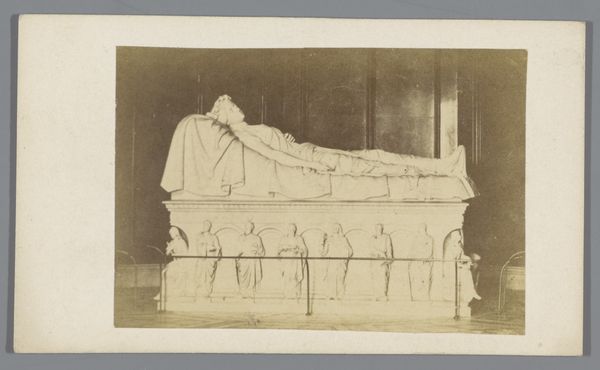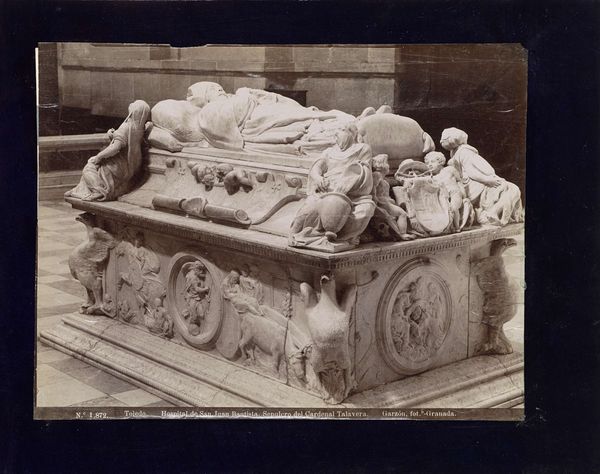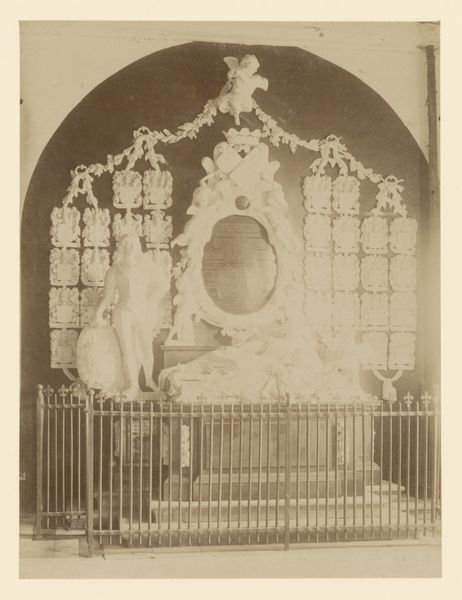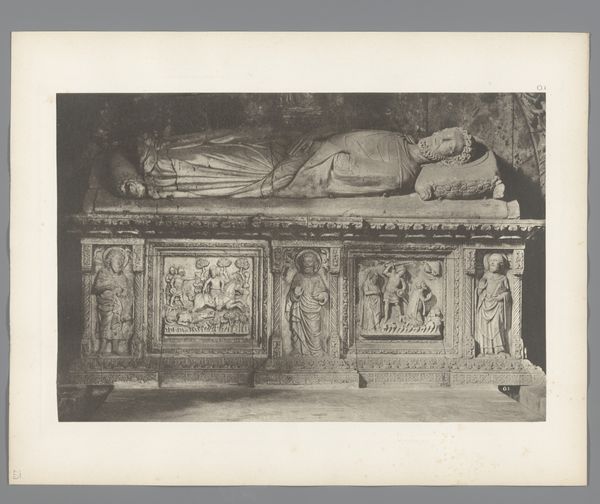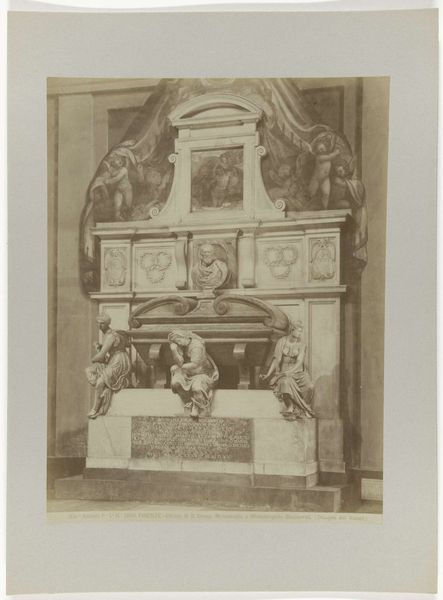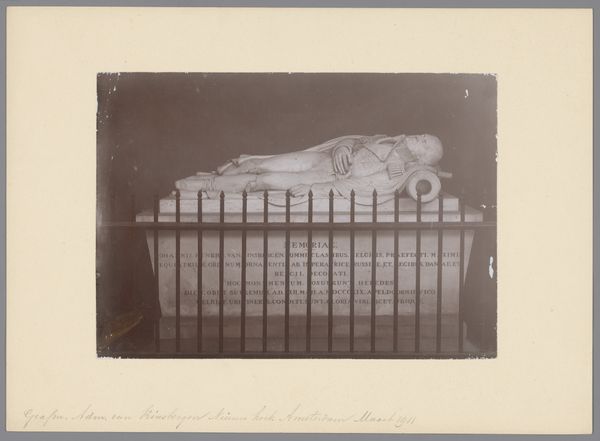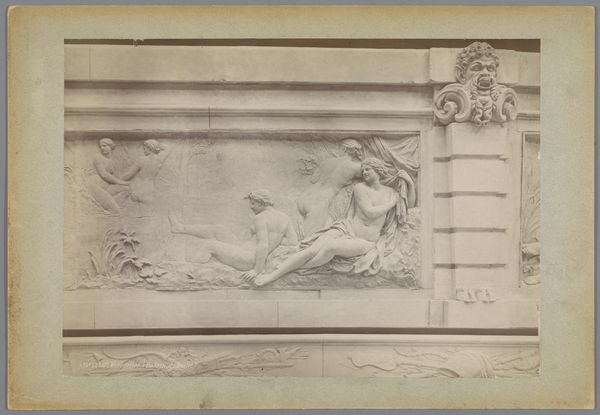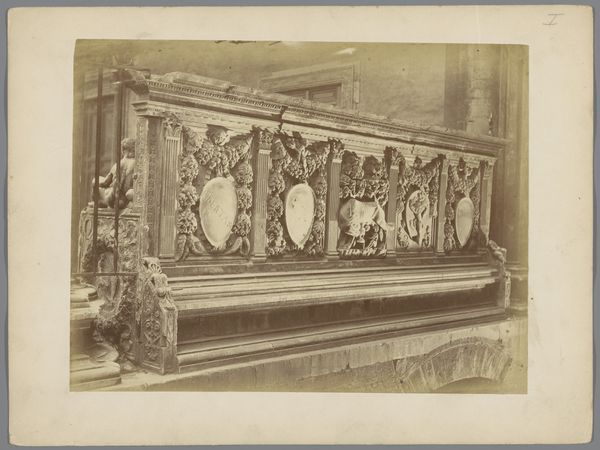
Graftombe van Ferdinand van Aragón en Isabella van Castilië in de Capella Real (kathedraal) in Granada, Spanje c. 1860 - 1900
0:00
0:00
juanlaurent
Rijksmuseum
mixed-media, print, photography, sculpture, site-specific
#
portrait
#
mixed-media
#
medieval
# print
#
landscape
#
photography
#
sculpture
#
site-specific
#
history-painting
Dimensions: height 247 mm, width 340 mm
Copyright: Rijks Museum: Open Domain
Editor: This is a photograph by Juan Laurent, taken sometime between 1860 and 1900. It captures the tomb of Ferdinand and Isabella in the Capilla Real of the Granada Cathedral. The detail is quite remarkable. I am struck by the ornate sculptural details; they seem to project both power and serenity. As an iconographer, what catches your eye? Curator: Well, I'm immediately drawn to the symbolism embedded within the tomb's design. Look closely at the recumbent figures of Ferdinand and Isabella themselves. Their posture, lying in repose, isn't just about death, it is about eternal rest and spiritual ascension. Do you notice anything specific about their attire or the objects near them? Editor: I see that they are clothed in royal garments and that Ferdinand is holding a sword. It feels symbolic of their reign, right? Curator: Precisely! The sword represents Ferdinand’s military strength and authority, whereas Isabella likely holds a rosary or prayer book, signifying her piety and devotion. Beyond the individual figures, think about what their joint burial signifies. It is the unification of Spain under their rule, but more than that, it cemented the symbolic power of the monarchy alongside the Catholic Church, establishing lasting visual and ideological associations for centuries to come. What emotional effect do you think the sculptor aimed for? Editor: I would say it is about reverence and awe. The sheer scale and intricate carving would inspire that. Curator: Exactly. And consider, what do those emotions reinforce in the viewer regarding royal power and divine authority? In understanding visual symbols, we unravel so much cultural memory, helping us appreciate the artist's intentionality and society’s values. Editor: I hadn’t considered the tomb as a statement about Church and Crown so much. Now I am starting to appreciate all the intertwined messages about nationhood, power, and religion being projected. Curator: Seeing those relationships makes the work timeless. It remains a very powerful message.
Comments
No comments
Be the first to comment and join the conversation on the ultimate creative platform.


